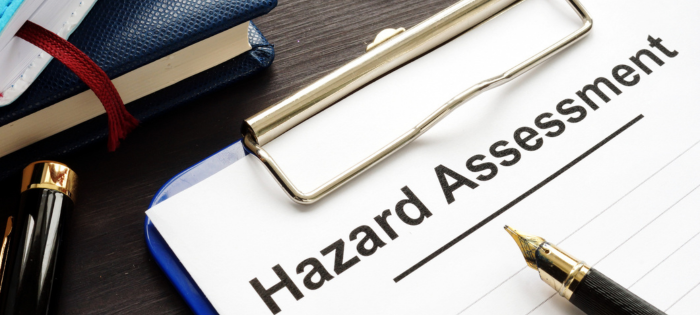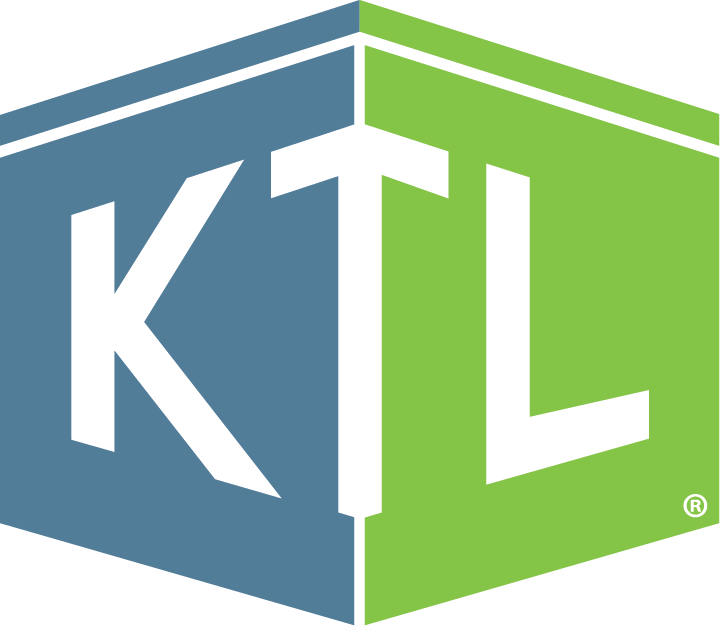
Safety
Comments: No Comments
Safe + Sound Week
According to the Occupational Safety and Health Administration (OSHA), a hazard is any source of potential damage, harm, or adverse health effects on something or someone. It is a condition, activity, or substance that could lead to injury, illness, or even death if not controlled. For any workplace—regardless of size, industry, location, etc.—it is important to understand and control workplace hazards. This is done by conducting a hazard assessment.
Importance of Hazard Assessments
One of the primary root causes of workplace injuries, illnesses, and incidents is the failure to identify and control potential hazards. A hazard assessment (also known as a risk assessment) is important because it takes a thorough look at the workplace to:
- Systematically identify those things that may cause harm (i.e., hazards), particularly to people.
- Determine how likely and severe the potential harm is (i.e., the associated risk).
- Decide what measures should be in place to effectively eliminate or control the harm from happening (i.e., hazard controls).
- Create a plan to prioritize hazards associated with a specific activity/task/job and implement identified controls.
Steps to Take
Hazard identification and assessment should include the following steps:
- Collect existing information about workplace hazards. Determine the types of hazards that may be present and who might be exposed. This information can come from sources already available in the workplace (e.g., safety data sheets (SDS), operating manuals, OSHA 300/301 logs, job hazard/safety analyses, safety programs, worker input, etc.) or external sources (e.g., trade associations, labor unions, safety consultants, OSHA, NIOSH, CDC, etc.).
- Inspect the workplace to identify safety and health hazards. The objective is to identify potential hazards and address them before incidents occur. Think about how people work and what practices they follow, how equipment is used, what chemicals are onsite, and what the general condition of the facility is. Generally speaking, workers have the best understanding of the work being done, so they should be engaged in inspections.
- Workplace incidents and near misses provide a clear indication of where hazards may exist. Look at past incident records to help identify less obvious hazards.
- Consider employees, contractors, visitors, and members of the public.
- Workstations, processes, operations, equipment, tools—and their related hazards—can all change, so regular inspections should be conducted.
- Consider physical safety hazards, but also identify workers’ exposure to health hazards, including chemical, physical, biological, and ergonomic hazards.
- Emergencies and non-routine situations present different hazards to manage. Identify foreseeable emergency situations and non-routine tasks and then develop procedures for responding appropriately and safely to potential hazards.
- Use checklists to help ensure the major categories of hazards are addressed (e.g., general housekeeping; slips, trips, and falls; electrical; equipment operation and maintenance; fire protection; work organization and process flow; work practices; ergonomics; emergency procedures).
- Assess the associated risk of identified hazards. Think about the types of incidents that could result from exposure to those hazards. Consider the severity of potential outcomes, likelihood that the event will occur, and the number of workers who might be exposed (i.e., the overall risk). How likely it is that someone could be harmed and how serious it could be? Who might be harmed and how?
- Rank your risks. Assigning priority to hazards based on their risk creates a ranking that identifies which hazards are the most serious and should be addressed first. Ranking risks should consider the probability of exposure and the potential severity of an incident. It requires knowledge of workplace activities, urgency of situations, and objective judgement.
- Identify control options. Risk can be reduced/eliminated by controlling or eliminating the hazard or reducing employees’ exposure to the hazard.
- Review external sources and investigate control measures used at other workplaces to identify options.
- Get input from workers who may be able to suggest/evaluate solutions based on their knowledge of the facility, equipment, and work processes.
- Select controls that are the most feasible, effective, and permanent using the Hierarchy of Controls, which emphasizes engineering solutions first, followed by safe work practices, administrative controls, and then personal protective equipment (PPE).
- Avoid selecting controls that may introduce a new hazard; discuss options with workers to ensure their feasibility.
- Develop a Hazard Control Plan. The Plan should describe how the controls will be implemented. What are you already doing to control the risks? What further action is required? Who is responsible for implementing the control? What is the timeline?
- Address the serious hazards first. While interim controls may be necessary, the ultimate goal is to ensure effective long-term control of hazards.
- Determine whether you can get rid of the hazard altogether. If not, identify what can be done to control the risk so harm is unlikely. This might include redesigning the job; replacing materials, machinery, or processes; reorganizing work; implementing new practices to work safely; or providing PPE.
- Select additional controls to protect workers during non-routine operations and emergencies.
- Assign responsibility and deadlines, conduct drills, track progress, and verify the effectiveness of controls once they are installed.
- Implement selected controls in the workplace. Implement measures according to the risk ranking priorities established in the Hazard Control Plan on a “worst-first” basis. Eliminate or control serious hazards as quickly as possible using interim controls, as necessary, while developing longer term solutions. In addition, promptly implement any easy and inexpensive solutions regardless of risk level.
- Follow-up to confirm that controls are effective. Monitor and track progress in implementing controls.
- Conduct regular inspections and preventive maintenance to confirm controls are operating as intended and still effective, particularly when there are changes to the workplace that could introduce new risks (e.g., staff, processes, substances, equipment).
- Record your findings so you can track and verify results.
- Communicate the results. Workers must be aware of every hazard associated with their job and the controls in place to protect them.
Part of the Plan
Hazard assessments are an integral part of a Health and Safety Management Plan. They help organizations to evaluate hazards and then minimize the level of their risk by implementing control measures to prevent injuries and illnesses, meet legal requirements, and create an overall safer and healthier workplace. Employees should be engaged in the process, as they are generally the most familiar with workplace practices. An external party can offer additional perspective, experience, and fresh eyes in answering the following questions:
- What are the potential hazards?
- What can happen and under what circumstances?
- What are the possible consequences and risks of those hazards?
- How risky are the possible hazards and associated consequences?
- How likely are they to occur?
- How severe?
- Who will they impact?
- How can we control or eliminate our hazards to reduce risks?
- Are our efforts successful?
- Have we achieved an adequate level of risk reduction?
- Is further action required?
